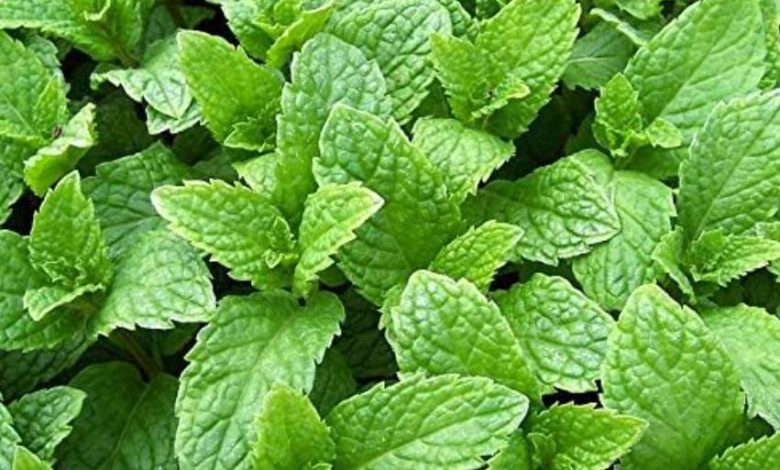Kentucky Colonel Mint Plant – A Comprehensive Guide to Cultivation

Kentucky Colonel Mint, renowned for its distinct flavor and versatility, is a must-have for culinary enthusiasts and gardeners alike. Originating from the lush landscapes of Kentucky, this mint variety is prized not only for its aromatic qualities but also for its numerous health benefits. In this article, we’ll explore the history, cultivation, uses, and health advantages of this popular herb.
History of Kentucky Colonel Mint
This mint has its roots firmly planted in American soil, particularly in the state of Kentucky, known for its rich agricultural heritage. The name “Colonel” pays homage to the state’s tradition of awarding honorary titles, often reflecting an individual’s contributions to society. This variety is believed to have been cultivated since the early 19th century, thriving in the fertile soil and favorable climate of the region.
Kentucky Colonel Mint is often associated with the classic Southern drink, the Mint Julep, which has become a staple at Kentucky Derby festivities. This refreshing cocktail, made primarily of bourbon, sugar, and fresh mint, exemplifies the herb’s deep connection to Kentucky’s cultural identity. Its history extends beyond culinary uses; it has also played a role in traditional medicine and folk remedies.
Cultivation of Kentucky Colonel Mint
Growing Conditions
This mint thrives in a variety of conditions, preferring well-drained, fertile soil enriched with organic matter. Ideally, it should be planted in an area that receives full sunlight for at least six hours a day, although it can tolerate partial shade. The pH level of the soil should be slightly acidic to neutral (around 6.0 to 7.0) to ensure optimal growth.
Planting and Propagation
Propagation can be achieved through seeds, cuttings, or division. While seeds can be planted directly into the ground, starting them indoors a few weeks before the last frost is often more successful. Cuttings from established plants can also be taken and rooted in water or directly in soil. Dividing mature plants in early spring or fall is another effective method to expand your garden.
Care and Maintenance
Once established, this mint requires minimal maintenance. Regular watering is essential, especially during dry spells, but it’s crucial not to overwater, as this can lead to root rot. Pruning periodically encourages bushier growth and prevents leggy plants. It’s also advisable to remove flower heads as they appear, as flowering can diminish the quality of the leaves.
To keep the mint healthy, consider applying a balanced fertilizer in the early spring. It is prone to pests like aphids and spider mites, so keeping an eye out for these invaders and treating them promptly with insecticidal soap or neem oil is vital.
Culinary Uses
Flavor Profile
This mint variety boasts a robust, sweet flavor that sets it apart from others. Its leaves are fragrant and can be used fresh or dried in a variety of dishes. The essential oils in the leaves are what give it its characteristic aroma and taste, making it a popular choice in kitchens across the United States.
Recipes Featuring Mint
- Mint Julep: The quintessential Southern cocktail, made with fresh mint, bourbon, sugar, and crushed ice, is a refreshing beverage perfect for hot days or Derby celebrations.
- Mint Tea: Brew fresh leaves in boiling water for a soothing herbal tea that can be enjoyed hot or iced. Add honey or lemon for extra flavor.
- Mint Pesto: Blend fresh leaves with pine nuts, garlic, Parmesan cheese, and olive oil for a unique twist on traditional basil pesto, great for pasta dishes or as a dip.
- Mint-Infused Water: Simply add fresh leaves to a pitcher of water, allowing the flavors to meld for a refreshing drink that hydrates and invigorates.
- Salads and Dressings: Incorporate fresh mint leaves into salads or use them to create a vibrant dressing with yogurt and lemon for a refreshing accompaniment to grilled meats.
Health Benefits
Digestive Aid
The mint variety has been traditionally used to alleviate digestive issues. The menthol in the leaves can help relax the muscles of the gastrointestinal tract, reducing symptoms of indigestion, bloating, and gas. Drinking mint tea after meals can promote better digestion and provide relief from discomfort.
Respiratory Relief
Menthol is also known for its respiratory benefits. Inhalation of mint oil can help clear nasal passages and alleviate symptoms of colds, allergies, and asthma. A few drops of mint essential oil in a diffuser or mixed with a carrier oil for chest rub can provide soothing relief.
Antioxidant Properties
Mint is rich in antioxidants, which play a crucial role in protecting the body from oxidative stress and inflammation. The presence of vitamin A, vitamin C, and various flavonoids contributes to its overall health benefits, supporting a robust immune system and promoting skin health.
Mental Clarity and Focus
Aromatic compounds in mint can stimulate the mind, enhance cognitive function, and improve concentration. Inhaling the scent of fresh leaves or drinking mint tea can provide a natural boost to mental clarity and focus, making it an excellent addition to study sessions or long work hours.
This delightful mint is more than just a flavorful herb; it symbolizes Kentucky’s rich culture and heritage. Its easy cultivation, diverse culinary uses, and significant health benefits make it a valuable addition to any garden or kitchen. Whether you’re enjoying a classic Mint Julep at the Kentucky Derby or sipping mint tea on a quiet afternoon, this variety enriches our lives with its flavor and wellness properties. Embrace the charm of this versatile herb, and let it inspire your culinary adventures and health practices for years to come.
